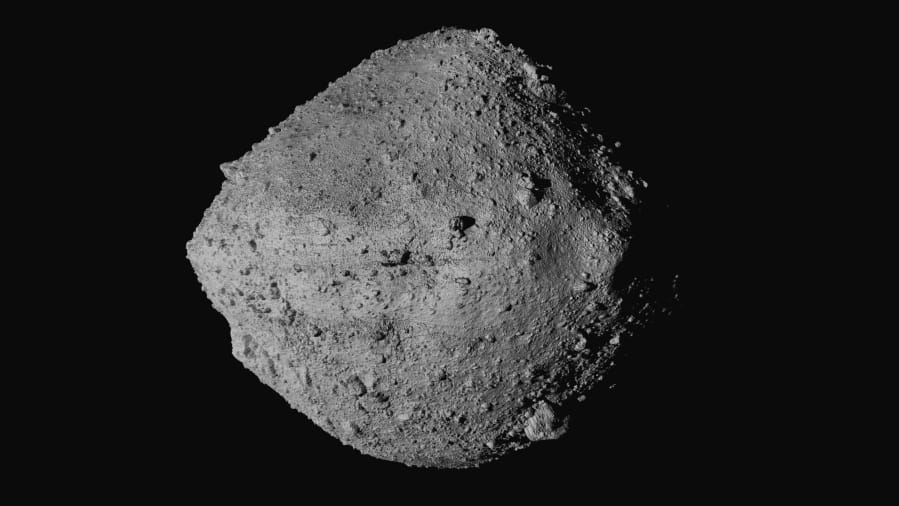CAPE CANAVERAL, Fla. — A NASA spacecraft descended to an asteroid Tuesday and, dodging boulders the size of buildings, momentarily touched the surface to collect a handful of cosmic rubble for return to Earth.
It was a first for the United States — only Japan has scored asteroid samples.
“Touchdown declared,” a flight controller announced to cheers and applause. “Sampling is in progress.”
Confirmation came from the Osiris-Rex spacecraft as it made contact with the surface of the asteroid Bennu more than 200 million miles away. But it could be a week before scientists know how much, if much of anything, was grabbed and whether another try will be needed. If successful, Osiris-Rex will return the samples in 2023.
“I can’t believe we actually pulled this off,” said lead scientist Dante Lauretta of the University of Arizona. “The spacecraft did everything it was supposed to do.”
Osiris-Rex took 4 1/2 hours to make its way down from its tight orbit around Bennu, following commands sent well in advance by ground controllers near Denver.
Bennu’s gravity was too low for the spacecraft to land — the asteroid is just 1,670 feet across. As a result, it had to reach out with its 11-foot robot arm and attempt to grab at least 2 ounces of Bennu.
The University of Arizona’s Heather Enos, deputy scientist for the mission, described it as “kissing the surface with a short touch-and-go measured in just seconds.” At Mission Control for spacecraft builder Lockheed Martin, controllers on the TAG team — for touch-and-go — wore royal blue polo shirts and black masks with the mission patch. The coronavirus pandemic had resulted in a two-month delay.
Tuesday’s operation was considered the most harrowing part of the mission, which began with a launch from Cape Canaveral back in 2016.
A van-sized spacecraft with an Egyptian-inspired name, Osiris-Rex aimed for a spot equivalent to a few parking spaces on Earth in the middle of the asteroid’s Nightingale Crater. After nearly two years orbiting the boulder-packed Bennu, the spacecraft found this location to have the biggest patch of particles small enough to be swallowed up.
After determining that the coast was clear, Osiris-Rex closed in the final few yards for the sampling. The spacecraft was programmed to shoot out pressurized nitrogen gas to stir up the surface, then suck up any loose pebbles or dust, before backing away.
Osiris-Rex could make two more touch-and-go maneuvers if Tuesday’s sample comes up short.



